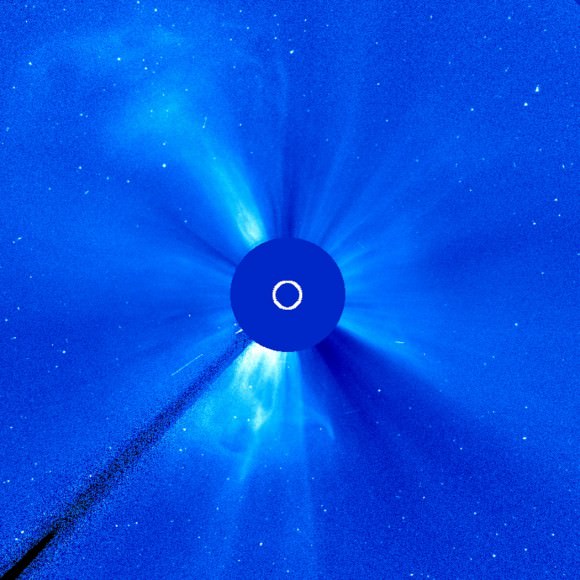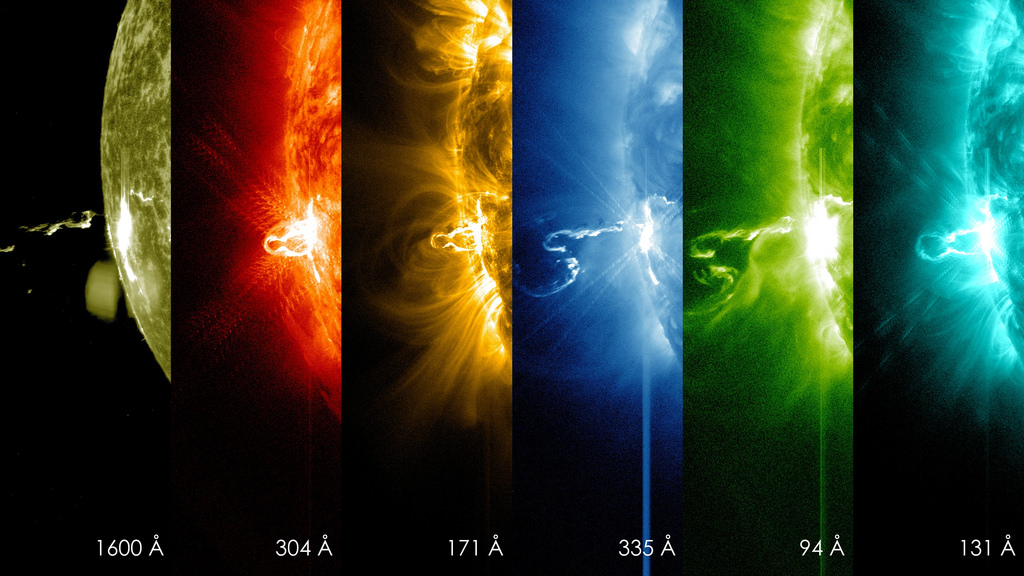She’s a rainbow! You can see the first moments of a huge flare belching off the sun in the picture above. The so-called X-class flare erupted a few hours ago (at 7:25 p.m. EST Feb. 24, or 12:25 a.m. UTC Feb. 25) and was captured by several spacecraft. If you have a pictures of the sun yourself to share, feel free to post them in the Universe Today Flickr pool.
NASA’s Solar Dynamics Observatory saw the flare growing in at least six different wavelengths of light, which are visible in the image above. This is classified this as an X4.9-class flare, which shows that it is pretty strong. X-flares are the most powerful kind that the sun emits, and each X number is supposed to be twice as intense as the previous one (so an X-2 flare is twice as powerful as X-1, for example).
SpaceWeather.com says this is the most powerful flare of the year so far, emitted from sunspot AR1967 (or more properly speaking, AR1990; sunspots are renamed if they survive a full rotation of the sun, as this one has done twice already!) While solar flares can lead to auroras, in this case it appears the blast was pointed in the wrong direction, the site added.
“Although this flare is impressive, its effects are mitigated by the location of the blast site–near the sun’s southeastern limb, and not facing Earth,” SpaceWeather stated. “Indeed, a bright coronal mass ejection (CME) which raced away from the sun shortly after the flare appears set to miss our planet.”

The sun goes through an 11-year cycle of sunspot and solar activity, which is supposed to be at its peak right now. This particular peak has been very muted, but lately things have been picking up. The European Space Agency noted that between Feb. 18 and 20, the sun sent out six CMEs in three days, with most of them moving in different directions.
“This level of activity is consistent with what we might expect as the Sun is near its maximum period of activity in the 11-year solar cycle,” ESA stated.
You can see the sun changing on this SDO page, showing the latest views of the sun in different wavelengths. And for more information on sunspots, check out this NASA page explaining a little more about how they work.

